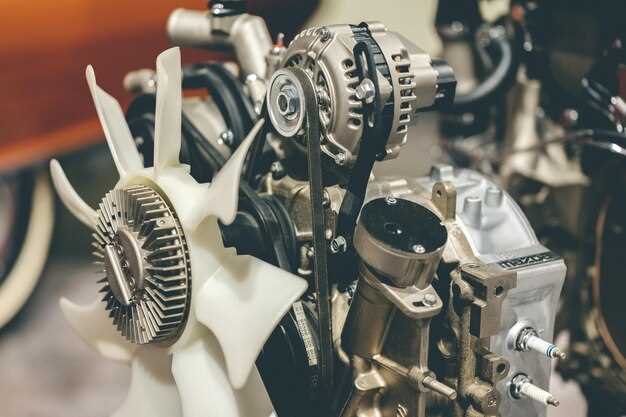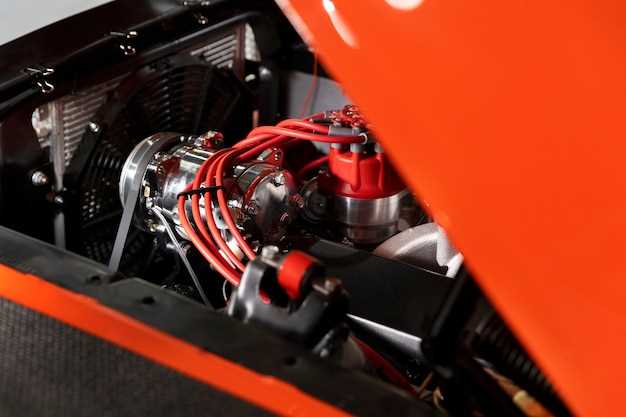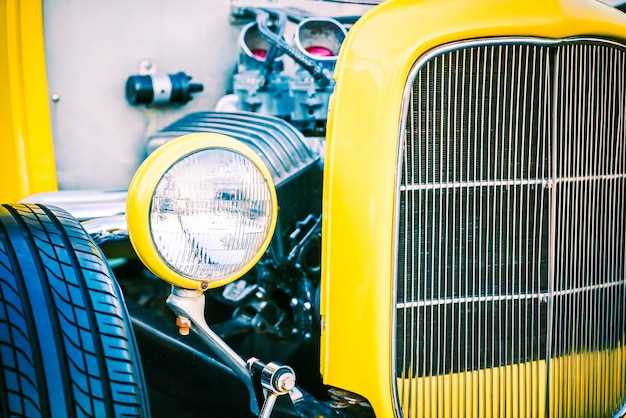
In the high-octane world of drag racing, the engine is often the heart of the machine, determining not only the speed but also the overall performance of the vehicle. Choosing the right drag engines is crucial for any serious competitor looking to dominate the track. These engines are engineered for maximum power and acceleration, enabling racers to achieve the best possible times in a competitive environment.
Drag racing engines come in various configurations and specifications, each designed to meet different performance demands. From naturally aspirated V8s to supercharged powerhouses, the diversity in engine design plays a pivotal role in drag racing success. As technology advances, modern engines are continuously being refined to extract more horsepower, improve reliability, and enhance throttle response, making them indispensable tools in the quest for speed.
In this article, we will explore some of the top drag racing engines that are renowned for their performance capabilities. By examining their key features, strengths, and potential applications, racers can make informed decisions to maximize their competitive edge at the drag strip. Whether you are a seasoned pro or a newcomer to the sport, understanding these engines will provide valuable insights into optimizing your race car for peak performance.
Choosing the Right Engine for Your Drag Racing Setup

Selecting the appropriate engine for your drag racing setup is crucial for achieving maximum performance on the track. A well-chosen engine can significantly enhance your vehicle’s horsepower and overall speed. Here are key considerations to keep in mind during your selection process:
- Engine Type: Different types of engines generate varying power levels and characteristics.
- V8 Engines: Known for their high horsepower and torque, ideal for traditional drag racing.
- Inline Engines: Often lighter and more compact, suitable for specific vehicle setups.
- Turbocharged Engines: Provide additional power through forced induction, enhancing performance significantly.
- Horsepower Requirements: Assess the horsepower needed for your specific racing class and goals.
- Determine the minimum horsepower requirements for your desired class.
- Consider balancing horsepower with vehicle weight for optimal performance.
- Higher horsepower engines may require advanced tuning and modifications.
- Weight Consideration: The weight of the engine influences vehicle dynamics and handling.
- Lighter engines can improve acceleration and handling.
- Ensure the engine’s weight is compatible with your car’s chassis for stability.
- Budget: Set a realistic budget for your engine choice.
- Account for purchase price, installation, and any necessary modifications.
- Factor in long-term maintenance costs associated with high-performance engines.
- Support and Parts Availability: Opt for engines with good support and readily available parts.
- Research aftermarket parts options for performance tuning and upgrades.
- Consider the responsiveness of the manufacturer for issues or upgrades.
By carefully evaluating these factors, you can select an engine that not only meets your performance expectations but also enhances your overall drag racing experience. Ensuring compatibility with your vehicle and balancing horsepower with other key parameters will set you on the right path to success on the drag strip.
Boosting Horsepower: Key Modifications for Drag Racing Engines

To achieve maximum performance in drag racing, specific modifications to engines are essential. These alterations not only increase horsepower but also enhance overall efficiency and responsiveness on the track.
One crucial modification is upgrading the intake and exhaust systems. A high-performance intake manifold allows for better airflow, which is vital for horsepower gains. Paired with a less restrictive exhaust system, this setup enhances the engine’s ability to expel spent gases quickly, leading to improved power output.
Tuning the engine’s fuel delivery system is another significant step. Installing larger fuel injectors ensures that the engine receives the necessary fuel volume to support increased horsepower. Additionally, using high-octane fuel can prevent knocking and promote more aggressive engine tuning.
Supercharging or turbocharging the engine is a powerful modification that can dramatically boost horsepower. These forced induction systems compress the intake air, allowing for more fuel to be burned, which results in substantial power increases. Proper tuning and cooling systems must accompany these installations to manage the elevated temperatures and pressures.
Forging internal components, such as pistons, rods, and crankshafts, enhances durability and supports higher horsepower levels. Engine internals must withstand the increased forces generated during drag racing, and using forged materials provides the necessary strength and reliability.
Finally, an efficient engine management system is critical for optimizing performance. Advanced ECUs allow for precise tuning of ignition timing, fuel mapping, and other parameters that can maximize horsepower based on the specific modifications installed.
These modifications collectively work to boost horsepower in drag racing engines, ensuring that competitors can harness every ounce of power for quick acceleration and peak performance on the track.
Comparative Analysis of Popular Drag Racing Engine Brands
In the competitive world of drag racing, the choice of engine is crucial for achieving maximum performance. Various brands have garnered reputations for their innovative engineering and ability to deliver explosive power on the strip. This analysis focuses on several leading manufacturers, highlighting their strengths and weaknesses in the arena of drag racing engines.
1. Chevrolet Performance
Chevrolet has long been a favorite among drag racers, especially with its small-block and big-block V8 engines. The Chevrolet LS series, well-known for its lightweight design and high horsepower potential, is a top choice for many competitors. The modular architecture facilitates extensive modifications, allowing racers to tailor their engines for specific performance needs.
2. Ford Performance
Ford’s Mustang and various performance crate engines have established a loyal following in drag racing. The Ford Coyote engine, a modern 5.0L V8, is celebrated for its robustness and ability to produce significant power with relative ease. Its capability to handle boost makes it an excellent candidate for supercharged drag setups.
3. Mopar (Chrysler)
Mopar engines, particularly the Hemi series, are renowned for their performance in drag racing circles. The distinct advantage of the Hemi design provides an aggressive powerband and top-end performance that many racers seek. While they may require more tuning rigor, the payoff in raw horsepower is undeniable.
4. Darrell Alderman Racing Engines
A lesser-known but highly respected name, Darrell Alderman Racing Engines specializes in building custom engines that dominate the drag strip. Known for exceptional attention to detail and performance tuning, these engines are tailored specifically for each racer’s needs, often resulting in competitive advantages.
5. Roush Performance
Roush is synonymous with high-performance Ford engines, offering packages that push the limits of horsepower and torque. Their engines typically feature upgraded internals and advanced cooling systems, making them viable options for serious racers looking to maintain reliability at peak outputs.
Conclusion
When choosing a drag racing engine, racers must consider factors such as power output, weight, and modification potential. Each brand offers unique features and capabilities tailored to different racing styles and goals. Ultimately, the right choice hinges on the specific requirements of the racer’s vehicle and track conditions, underscoring the importance of thorough research and analysis.



